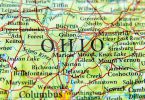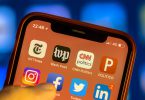Building a brand is no easy task and maintaining a loyal and happy customer following can be even more daunting. However, there are a few obvious dos and don’ts when it comes to managing any brand. What’s even more helpful, are the lessons that come from other brands or branded personalities that have veered off path in terms of the reputation. New research has even found that brands that invest in advocacy and CSR initiatives actually have a better chance at retaining loyal customers in the long run.
In this week’s PRSA “Friday Five” post — an analysis of the week’s biggest public relations and business news and commentary — we look at brands that get it, brands that are struggling and brands that need a serious clue in the wake of amplified reputational hazards. We will also explore how social media, advocacy and a revitalized vision can deliver a brand from monotony and achieve smart, loyal brand advocates.
A new study conducted by Social@Ogilvy found that 80% of reach from marketing campaigns now comes from amplification through advocacy. This has to do with whether or not customers are compelled to take action by sharing their feelings about a brand which adds to the overall impact of any marketing effort. The study analyzed seven million brand social mentions across four countries (Brazil, China, UK, US) and 22 brands to determine the key drivers of advocacy. Research from the study found that brands can actually save marketing dollars by successfully making advocacy a priority.
The 10 Top-Perceived Brands in the U.S. (Ragan’s PR Daily)
Apple and Google fell off the list of 10 top-perceived brands in the first half of 2013, according to YouGov BrandIndex research. In the top spot this year is Ford and YouGov credits the rise in rank to the success of the Ford Focus and the “And is better” advertising campaign. Amazon not only took the number two spot but its Kindle brand came in at number nine. Get the full list of the 10 top-perceived brands from PR Daily this week.
2 Reasons Your Brand Should Be on Google+ (PRNews)
This week Google+ is celebrating its second birthday and its place as the world’s second largest social network. Since G+ made its debut into the social network realm, it has grown steadily and hosts 500 million users, 359 million of whom are reported to be active monthly users. There are a number of ways that brands can benefit from hopping on the G+ train. Here are two ways that brands can capitalize on this social network:
- Connect and engage with important stakeholders and influencers via Google Hangouts at no extra cost to the brand. Hangouts can now accommodate limitless numbers of G+ users.
- Using Circles, brands can easily share content with G+ users helping to spread the word even further. According to Searchmetrics, G+ will overtake Facebook in content shares by 2016. Circles allow brand advocates to share news with friends that are designated to particular groups.
Lessons from Paula Deen: How What You Say Can Damage Your Brand (Entrepreneur)
Paula Deen, through her passion for food and cooking, established herself as a brand, building a trusted, loyal following. Customers take comfort in being able to rely on a brand to remain honest in their business dealings leading most people to choose a brand and stay loyal to it. Paula Deen is a perfect example of a brand exhibiting inconsistent and insincere behavior and has left many fans soured with the full brand experience. Her announcement about having diabetes that followed her sponsorship deal with a diabetes drug company and recent allegation of her making racist comments are not helping her crisis communication case whatsoever. What can brands learn from this ordeal? Be clear about who you are as a brand. Make sure your actions and behavior align with your customers and clearly stated intentions as a brand. Remain consistent, which will help many brands avoid a reputation of being insincere.
The Anatomy of a Comeback (Inc.)
The Narragansett Brewing Company is great example of brand that came back to life after almost becoming obsolete within their market. While the Narragansett brand remained, operations were shut down in the early 1980’s and by 2005 the beer was for sale in only ten bars. Mark Hellendrung can be credited with the revival of the brand. Hellendrung bought Narragansett, took over as owner and CEO and reestablished the brand by choosing to brew the beer out of state. This decision led to a major increase in revenue and sales, and the beer is now being sold in about 2,500 bars across New England and up and down the East Coast. For more on Mark Hellendrung (@MarkHellendrung) and the Narragansett brand read the full article at Inc.com.
Nicole Castro is the public relations associate at the Public Relations Society of America.






